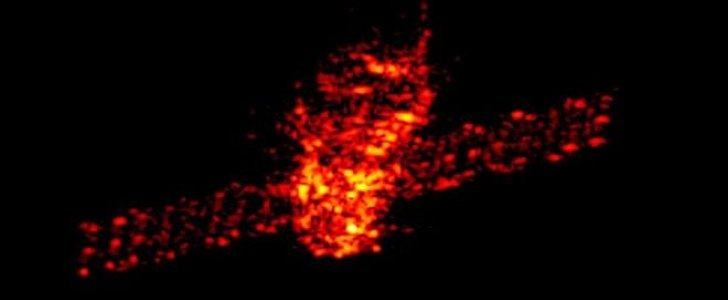The uncertainty surrounding the fall of Chinese space station Tiangong-1 from the sky has been cleared after on Monday the dreaded bus-sized hunk of metal mostly disintegrated at reentry.
China’s space agency did say that some debris from Tiangong-1 made contact with the waters of the South Pacific, but obviously, nobody was hurt. It’s not however very clear where exactly over the water the station disintegrated.
According to several sources, cited by BBC, Tiangong-1 seems to have come down somewhere North-West of Tahiti. It missed by hundreds of miles the so-called Spacecraft Cemetery, a region of the Pacific ocean where defunct space craft are being stored.
Initially, China planned to bring Tiangong-1 down in a controlled manner and crash-land it in the said location, where the Mir space station also lies.
The demise of the space station puts to rest fears that debris from reentry might fall in populated areas. The possible points of impact were calculated by the European Space Agency to be situated anywhere between 40 degrees North and 40 degrees South, including most of the areas with an average population density of some 60 people per square km.
The Chinese Aerospace Science and Technology Corporation (CASC), the country’s main contractor for the space program, said when the loss of control over the station was clear that “there is a chance that a small amount of Tiangong-1 debris may survive reentry and impact the ground.”
Tiangong-1 was China’s first prototype space station. It reached orbit in 2011, awaiting the first manned mission, the Shenzhou 9, to arrive one year later. In 2013, the second and last mission with people onboard reached the station.
From the get-go, Tiangong-1 was intended to last for only two years. In 2013 it was put in sleep mode and ceased functioning in 2016. It then began its long ride down back to the Earth.
According to several sources, cited by BBC, Tiangong-1 seems to have come down somewhere North-West of Tahiti. It missed by hundreds of miles the so-called Spacecraft Cemetery, a region of the Pacific ocean where defunct space craft are being stored.
Initially, China planned to bring Tiangong-1 down in a controlled manner and crash-land it in the said location, where the Mir space station also lies.
The demise of the space station puts to rest fears that debris from reentry might fall in populated areas. The possible points of impact were calculated by the European Space Agency to be situated anywhere between 40 degrees North and 40 degrees South, including most of the areas with an average population density of some 60 people per square km.
The Chinese Aerospace Science and Technology Corporation (CASC), the country’s main contractor for the space program, said when the loss of control over the station was clear that “there is a chance that a small amount of Tiangong-1 debris may survive reentry and impact the ground.”
Tiangong-1 was China’s first prototype space station. It reached orbit in 2011, awaiting the first manned mission, the Shenzhou 9, to arrive one year later. In 2013, the second and last mission with people onboard reached the station.
From the get-go, Tiangong-1 was intended to last for only two years. In 2013 it was put in sleep mode and ceased functioning in 2016. It then began its long ride down back to the Earth.

